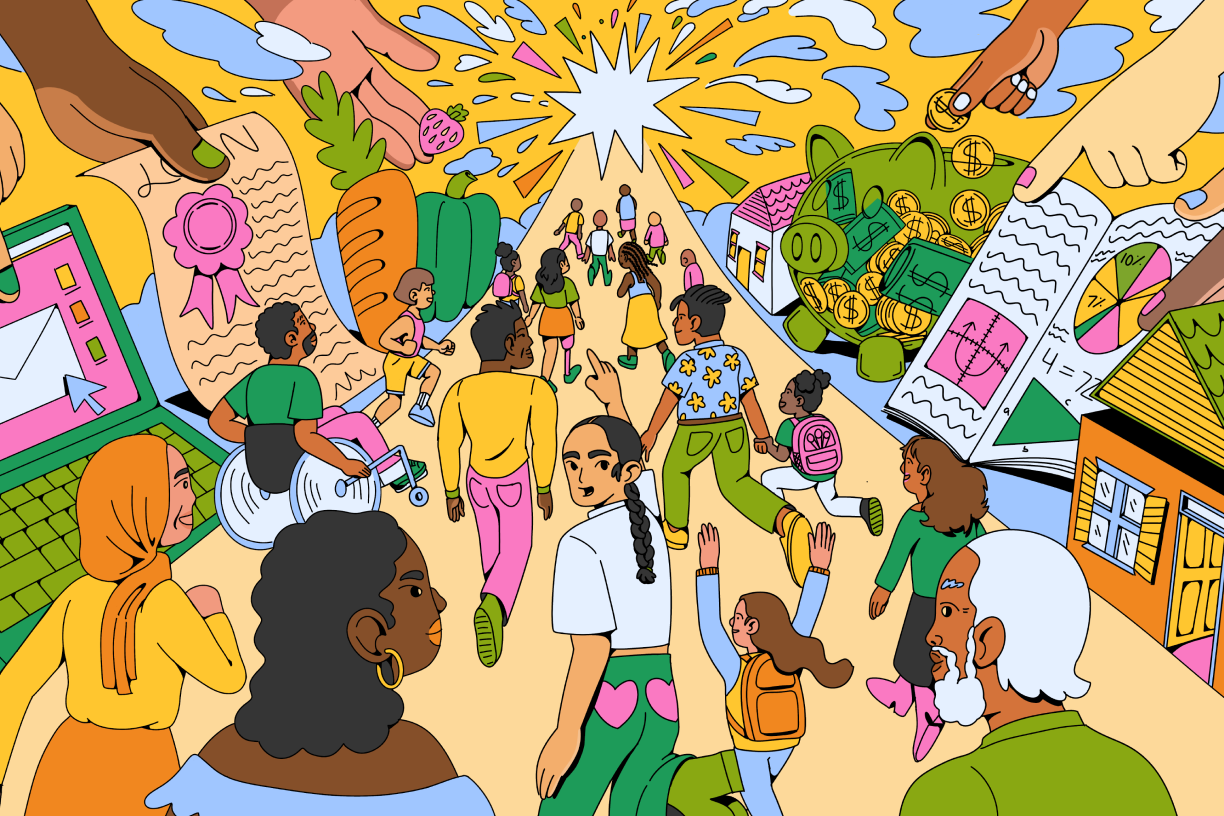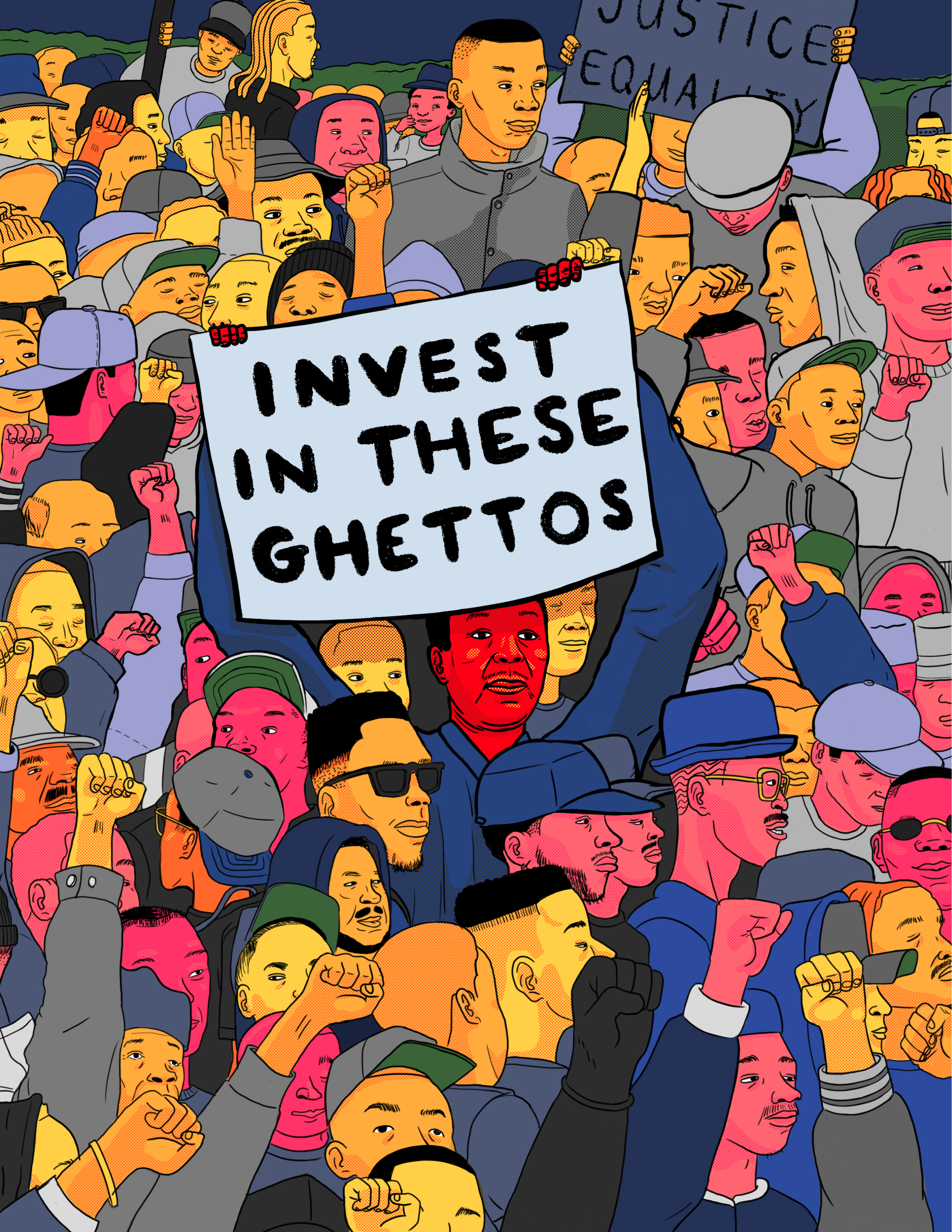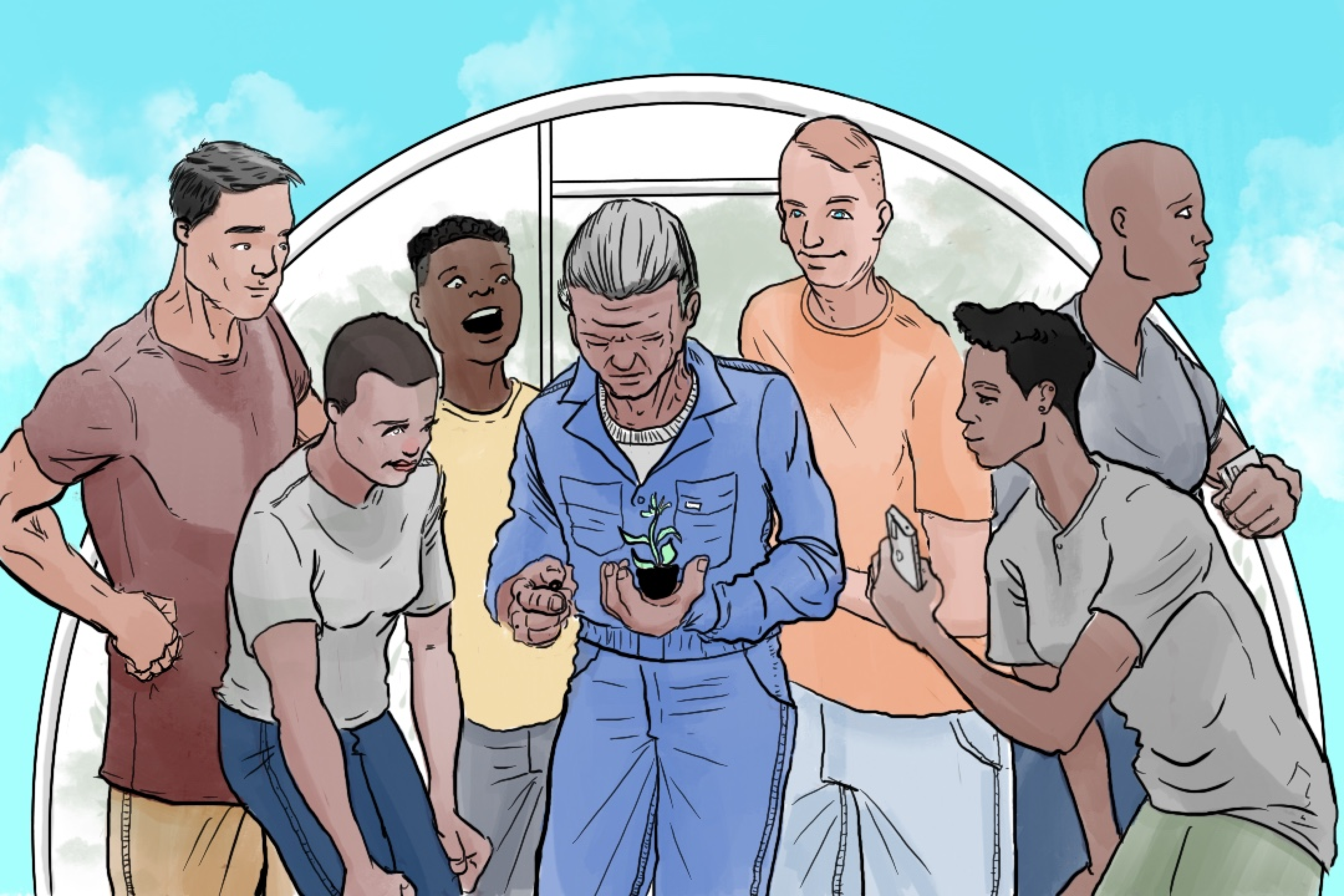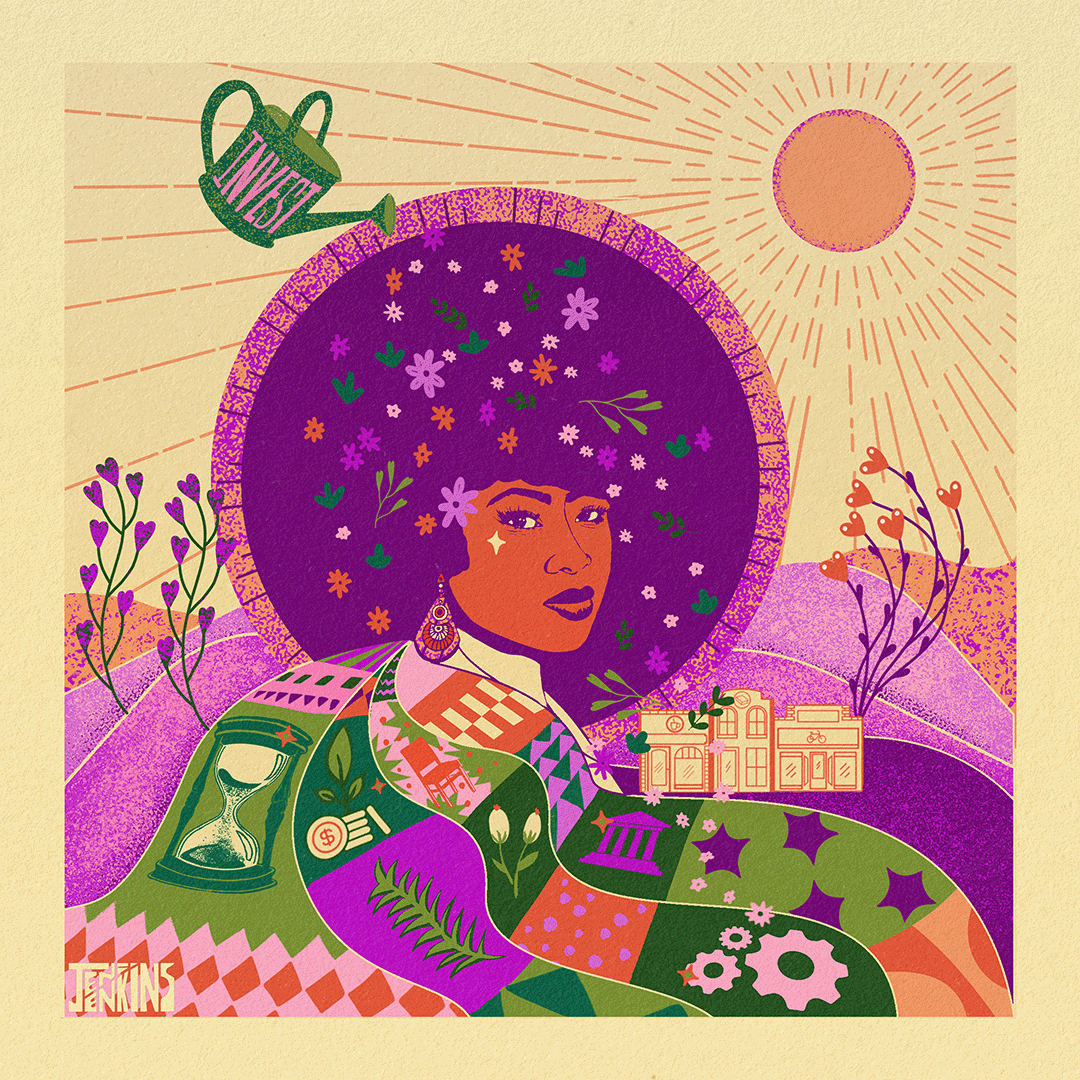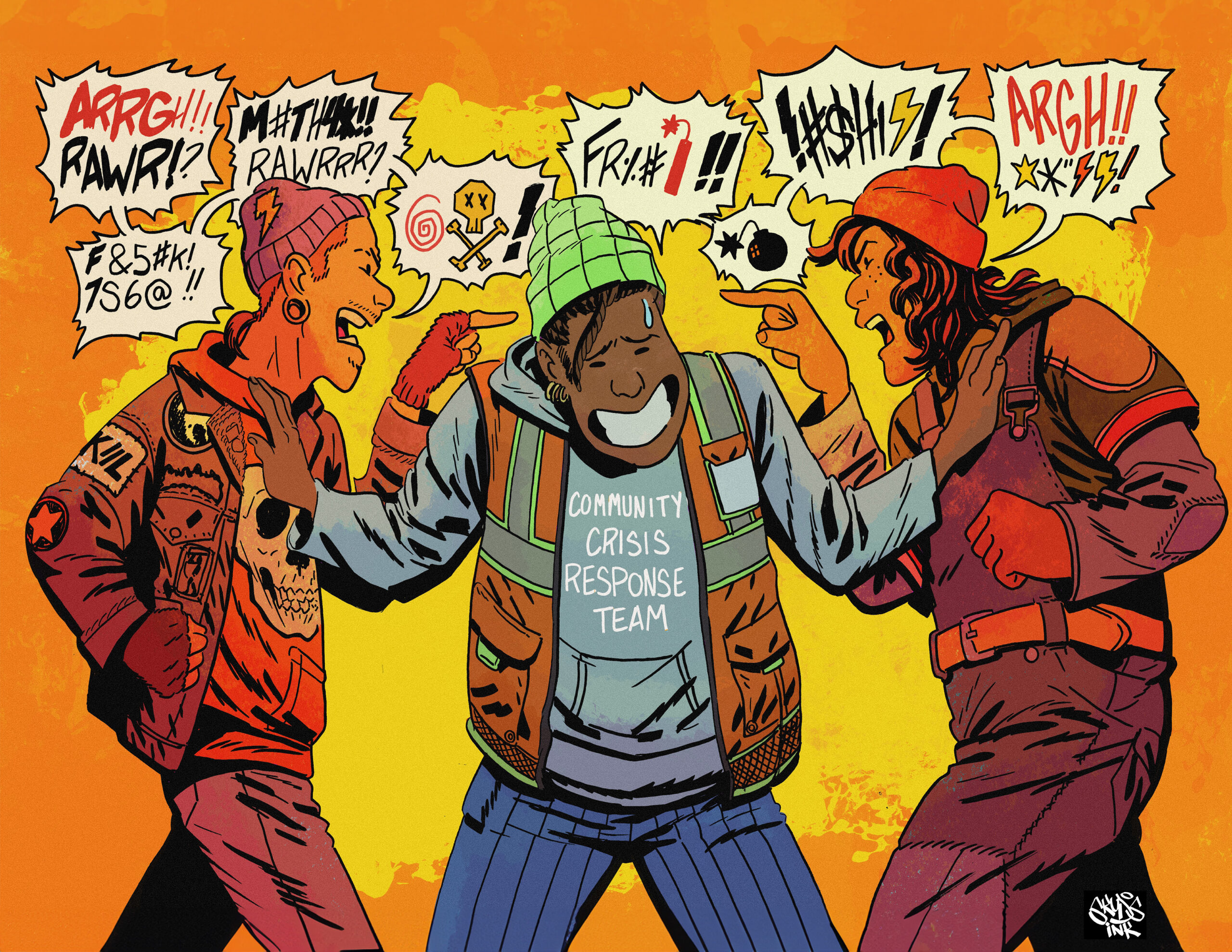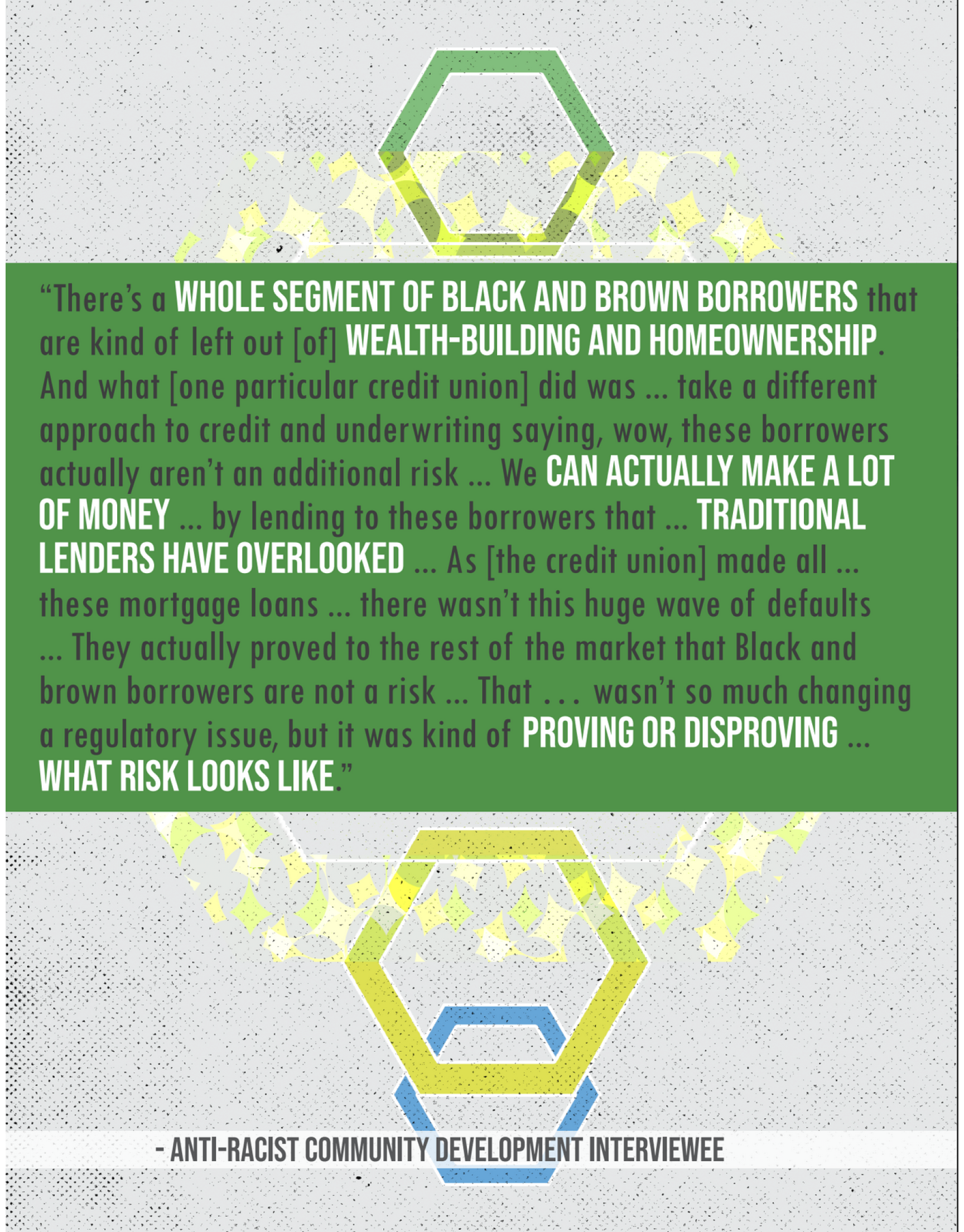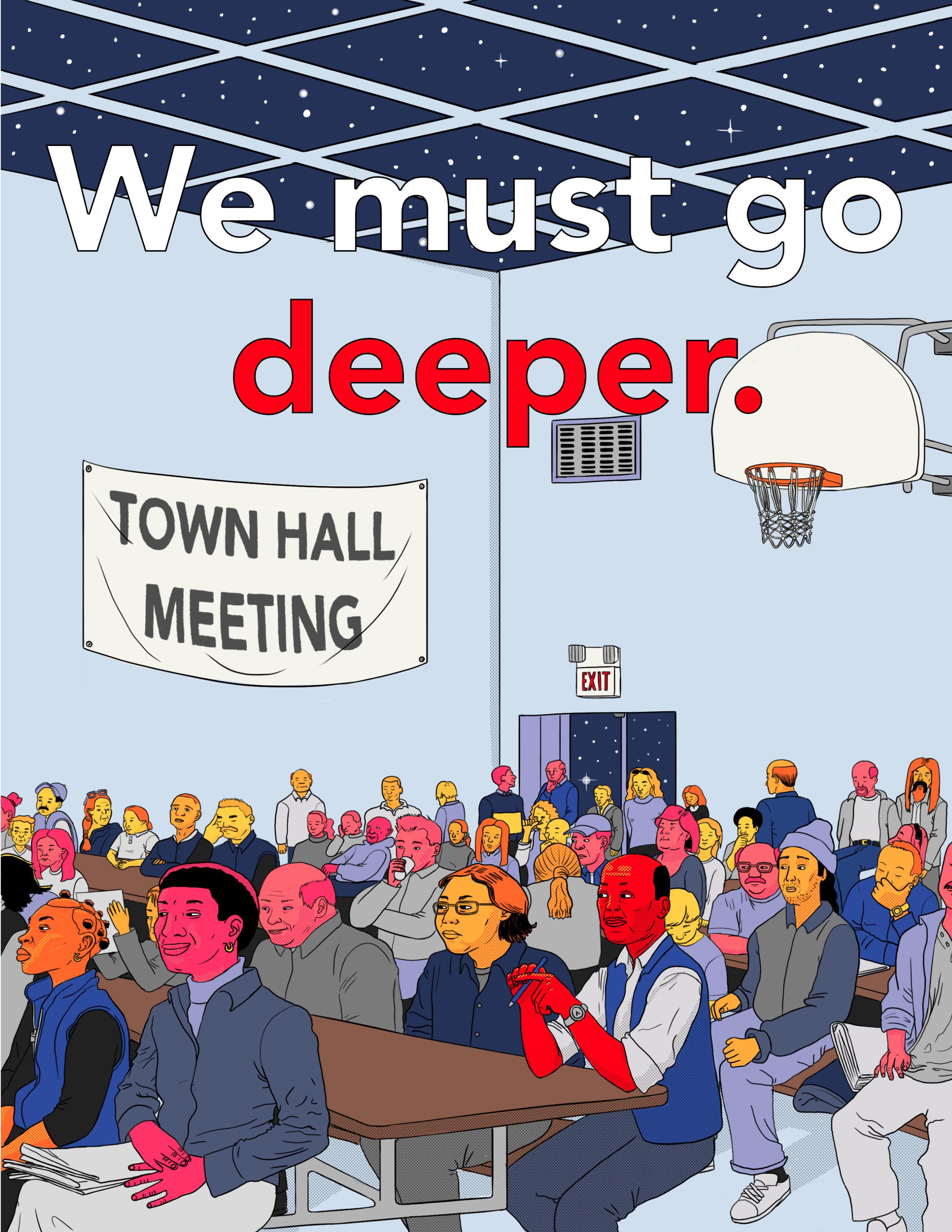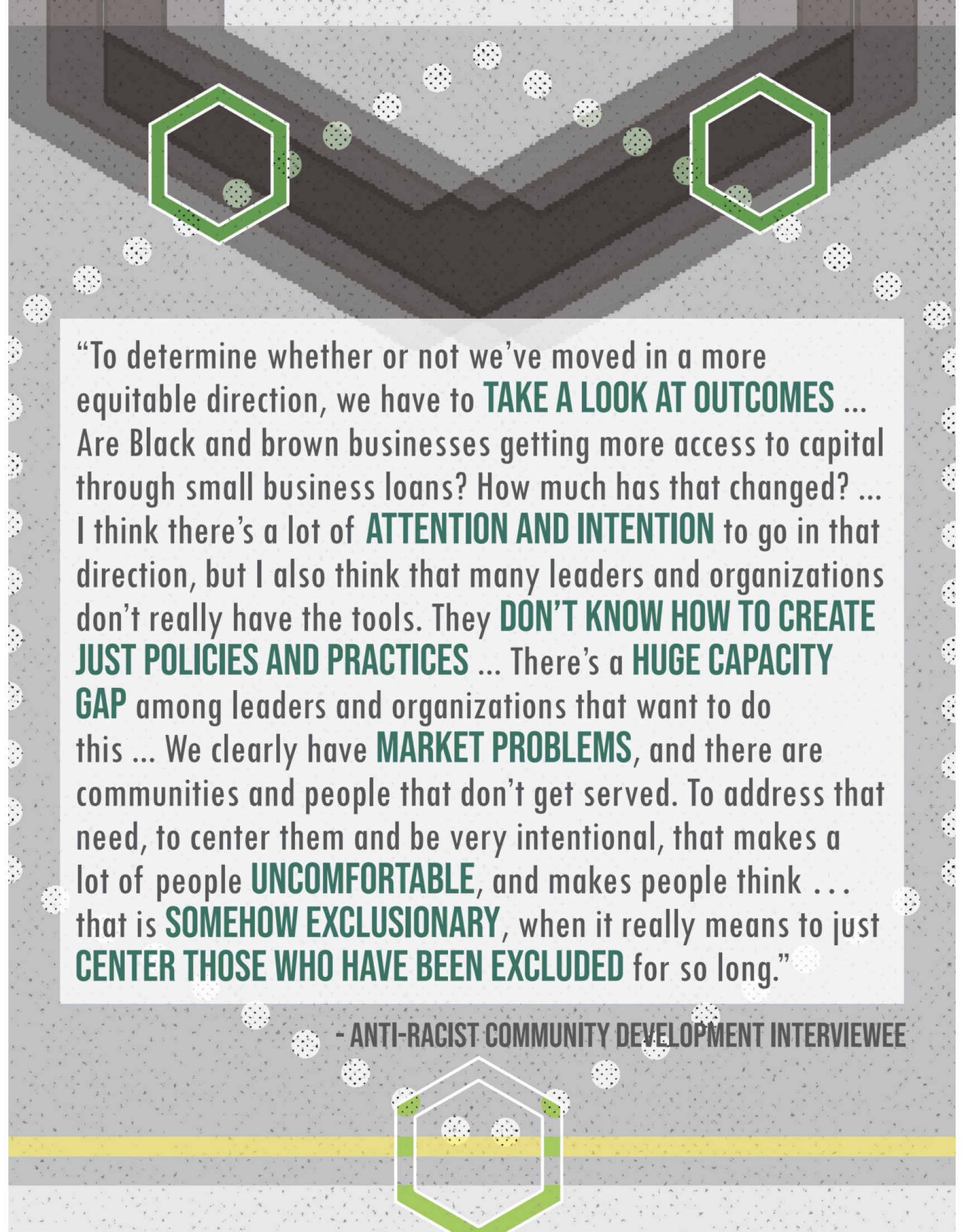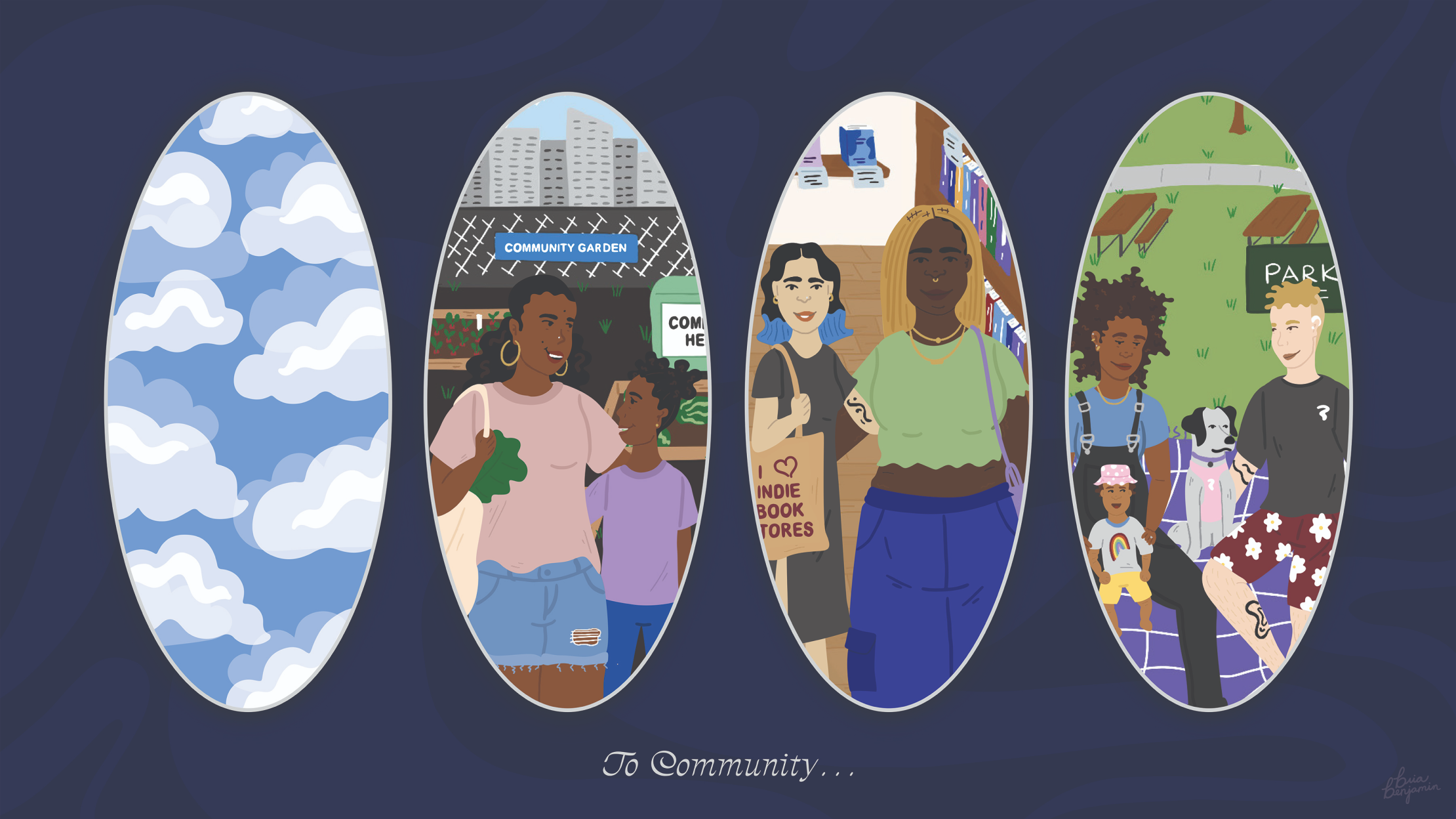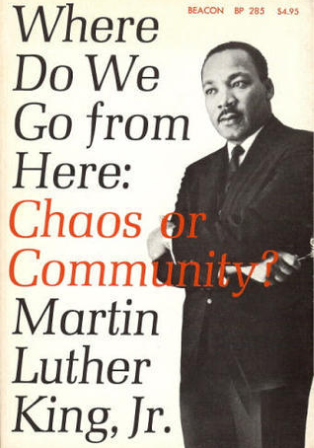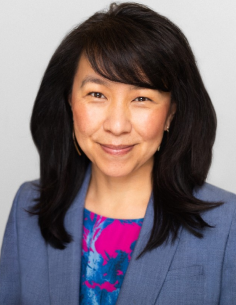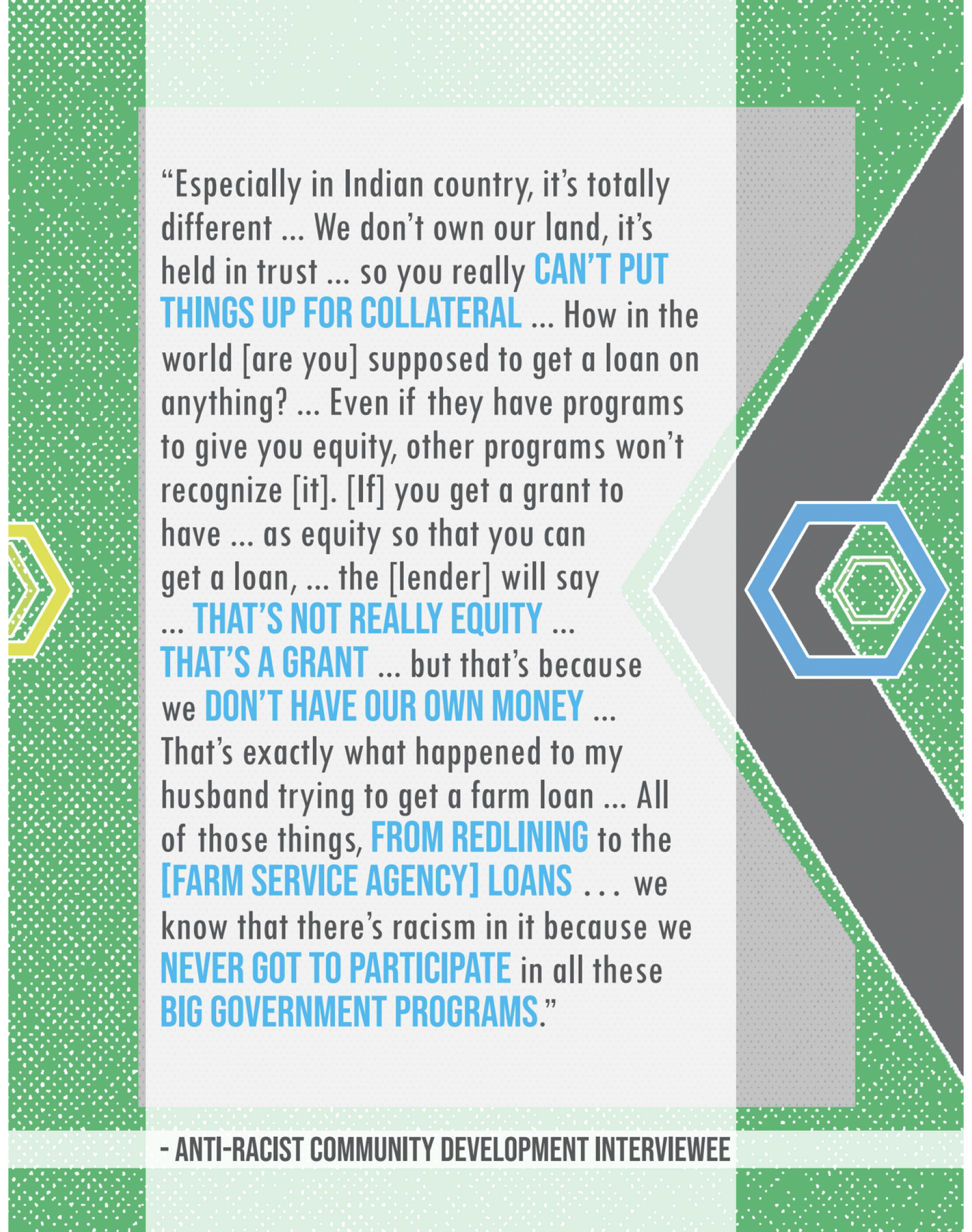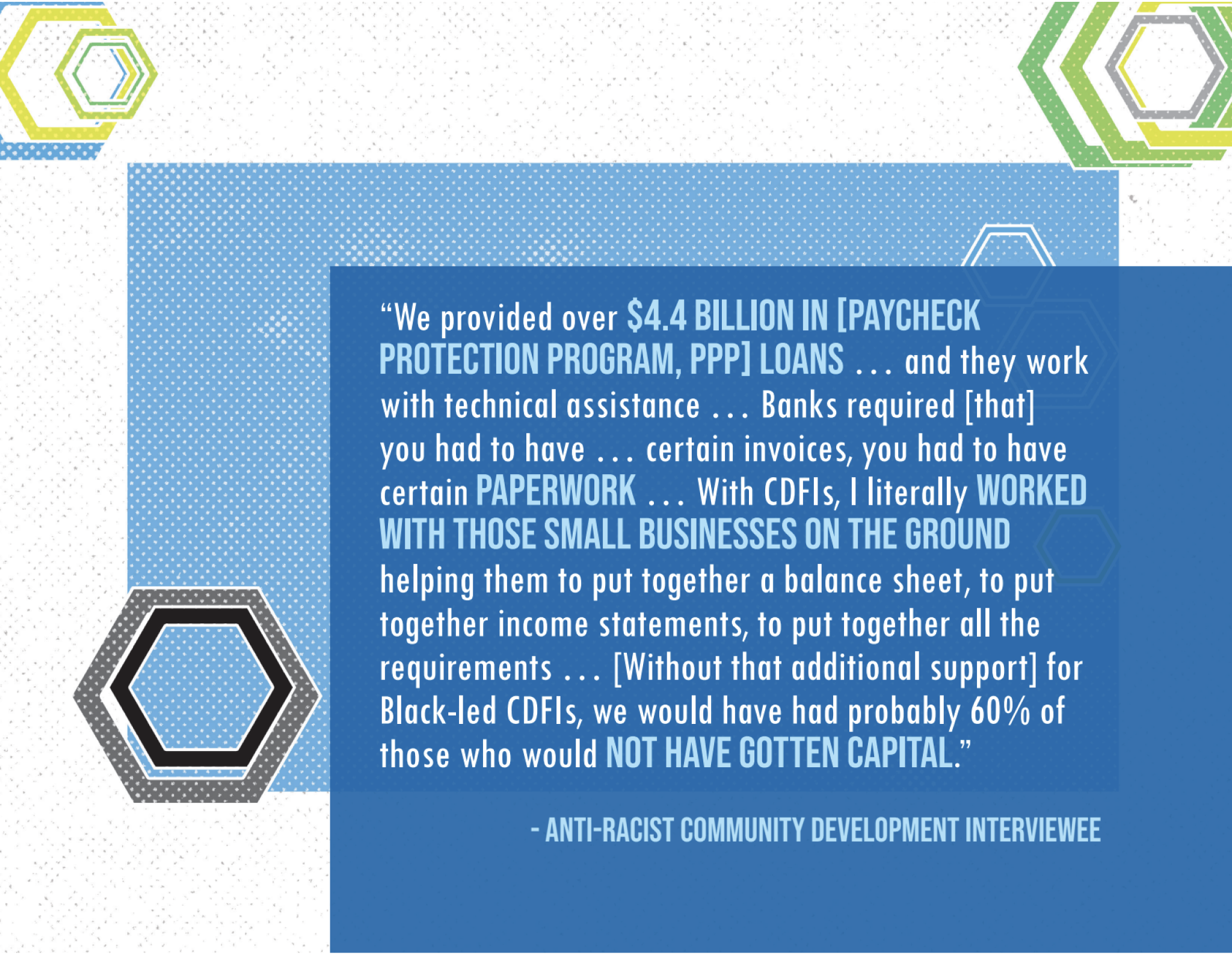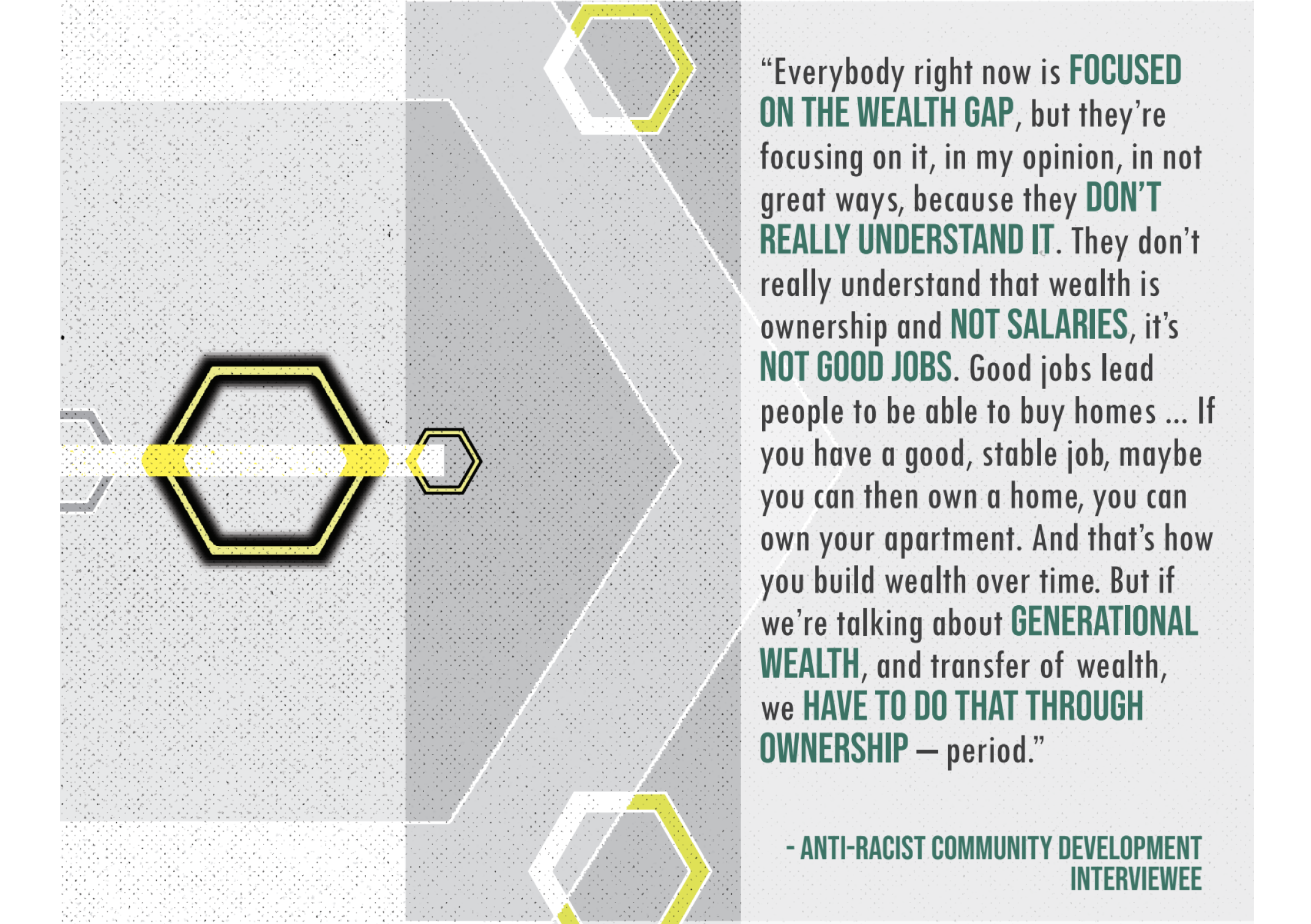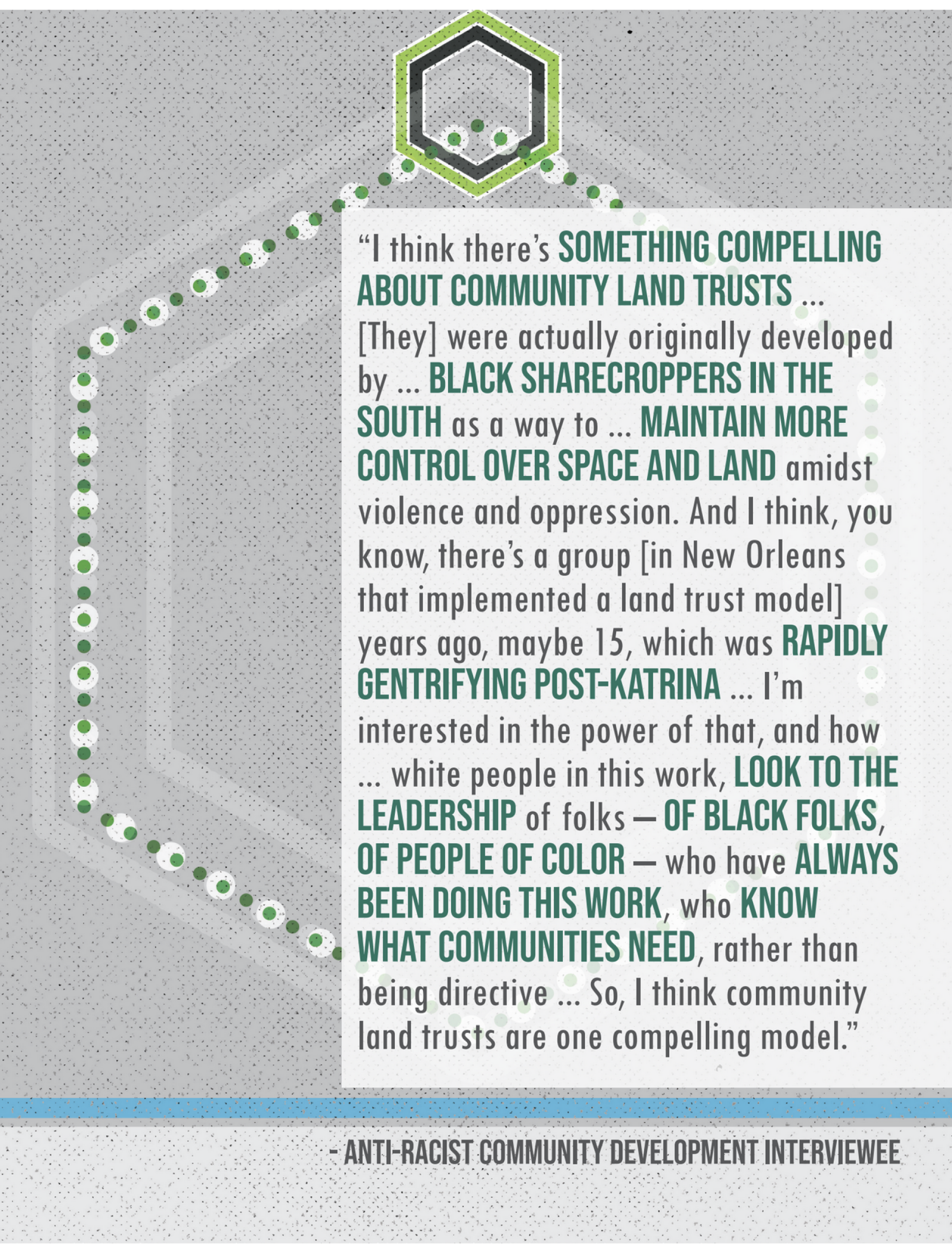At the Intersection of Money & Mission
IN(TER)VIEW, Kim Dempsey - 10 mins read
We sat down with Kim Dempsey to discuss Community Development Financial Institutions (CDFIs), what they do, what gets in the way of that work, and practical reforms for equitable financing.
To start, how would you describe CDFIs to folks that are a little less familiar with what they are?
Kim: CDFIs are mission-driven organizations (nonprofit and for-profit) generally focused on serving and investing in communities that have been structurally excluded from opportunity, often referred to as “low-income”, “disadvantaged”, or “disinvested”, primarily through real estate financing and lending. Many also provide grants, technical assistance, or other capacity building programs and make non-real estate investments. CDFIs attract money from a variety of sources and then deploy it effectively and efficiently into communities to support people-centered outcomes. For this piece, I will be speaking from my experience working and investing in nonprofit, unregulated CDFI loan funds.
You mentioned CDFIs targeting investment in communities that are described as “low-income” or “disadvantaged”. Do you find those are proxies for race, or are we talking about poverty, regardless of race?
Kim: Historically, we were much more focused on standard definitions of the term “low-income” (area median incomes, poverty rates, etc.) as it related to families or neighborhoods. When I first began working in the CDFI sector, in the early 2000s, we rarely talked about race explicitly, much less racial equity. In recent years, CDFIs are more likely to be intentional about how their business activities and internal policies are advancing racial justice. In this vein, the CDFI activities that I admire the most include wholesale and explicit review and revision of lending policies for racial bias; the development of specific programs designed to advantage certain borrowers, including Black and brown developers and business owners; and internal, organizational work to better understand how CDFIs’ own practices and cultures can either help or hinder our efforts to advance racial equity.
You mentioned the tension between community development values and community development priorities. What sticks out as particularly big tensions for CDFIs?
Kim: CDFIs are designed to have mission-oriented goals. Those aspirations do not always align well with many investors from the perspective of time, risk tolerance, or expectations around pace of change. Philanthropy, in particular, works in short-term cycles and tends to follow narrowly defined programmatic areas, while placing significant reporting burdens on grantees, including CDFIs.
CDFIs, as a sector, have a strong track record of both financial and portfolio performance. In fact, our loans performed better, on average, compared to banks during the 2008 financial crisis. CDFIs experience very few losses, and rarely fail to repay our investors, which tells you something about the risks that we’re actually taking. Some investors might have a perspective that investing in real estate that serves people who don’t have much money (e.g., those that live in affordable housing) is high-risk, so they price and constrain our use of their capital accordingly. But nonprofit-owned and operated housing, for example, actually performs really well and has over a long period of time. These investor perceptions of the risks of CDFI lending create a Catch-22: we have to frame our work as taking enough risk to be meaningful but not so much that investors worry about losing their capital. The result is that most CDFIs must raise small checks from a large number of investors, which ties us to complicated and time-consuming financial management and reporting responsibilities.
I’m hopeful that our sector is forging pathways to new sources of capital, beyond regulated banks, but we also have to change our own mindset and practices. This idea that we cannot take risks that would jeopardize our ability to repay investors is deeply ingrained in the way CDFIs operate and make lending decisions. Change is required from within, not just by investors.
Is the movement toward a more race-explicit financing strategy happening disproportionately among CDFIs, or are you seeing similar activity happening in traditional finance?
Kim: It’s important to understand that most nonprofit CDFIs are capitalized by traditional financial institutions, either through on- or off-balance sheet investments or through the provision of equity in exchange for federal tax credits. Specifically, we get most of our money from banks who are motivated to invest in CDFIs largely to comply with the requirements of the Community
Reinvestment Act (CRA), a regulation put in place in 1977 in response to banks engaging in redlining – refusing to lend in Black and brown communities and communities with low incomes. The CRA remains a regulatory “stick” that forces banks to invest or provide grants where they generate deposits, particularly in communities living with low incomes and high poverty. For the last 30 years or so, banks have been investing in CDFIs largely to help accelerate and expand their ability to comply with CRA. But these bank dollars come with significant restrictions on use and expectations on CDFIs’ financial performance that can constrain our ability to take calculated risks and have meaningful impacts on social equity objectives. For example, CRA-motivated funds typically carry geographic restrictions on where they may be deployed. Also, as a long-standing practice – though, notably, not a regulation – banks hold CDFIs to more conservative financial covenants than they are required to meet themselves. And banks often require guarantees or other forms of credit enhancement to virtually ensure they will never take a loss on dollars they lend CDFIs. Yet few CDFIs have ever failed to repay investor capital, and most of us have maintained loss rates around 1% for our entire operating history (our historical charge-offs are comparable to those of banks.)
When I hear criticism that “CDFIs are becoming as conservative as banks – aren’t they supposed to be mission-oriented?”, the fact is CDFIs’ reliance on bank capital means that banks still write many of the rules for the kind of lending we do and the type of risks we can take. Ideally, in recognition of CDFIs’ long history of strong portfolio performance, financial strength, and demonstrated ability to repay investors, banks would revisit their credit and underwriting standards for CDFIs, including reducing our required equity, extending investment terms, and allowing for more flexible uses. These less conservative approaches would allow us to focus more time, energy, and resources to advance racial equity and social justice.
There are some bright lights with regards to bank activities to advance racial equity. Special Purpose Credit Programs (SPCPs) allow banks explicitly to use race-based (and other) criteria to lend when they can demonstrate that they have unfairly disadvantaged people of color (or other economically disadvantaged groups). It’s highly underutilized, but because agencies like the Consumer Financial Protection Bureau have explicitly affirmed the legality of SPCPs, many major banks now have implemented them.
We’ve heard from interviewees that there’s already an ebb from 2020 commitments – by funders and investors – to supporting racial justice work in community development. If CDFI priorities are shaped by where investors are moving, how do CDFIs safeguard against backtracking on racial justice work if investors’ support shifts?
Kim: The first safeguard is establishing the business case for equitable practices and policies. If I’m talking to people primarily motivated by financial returns, I need to be able to articulate why they should care; meaning, why more inclusive and equitable investment practices are good for bottom lines. For example, given changing demographics in the U.S., if you are a bank that does not examine your mortgage lending practices to ensure you are as inclusive as possible, you may miss out on expanding your customer base to the millions of Black families that are mortgage ready. The other thing is to be attuned to intersectionality. For example, CDFIs are increasingly focused on climate change, in part because there are new resources available through federal programs like the EPA’s Inflation Reduction Act, and because climate justice is racial justice. If we can be better at making the case about the intersectionality between race and other pressing issues of the day, we can stay relevant in many more investment conversations.
Where does all of that risk perception come from? What do you do about it?
Kim: Fear of loss is embedded in a dominant narrative that if you invest in communities of color, you risk losing money. First of all, there is no compelling evidence that’s true. At the same time, if your community has been systematically denied access to loans – to buy a home, own a business, develop housing – over multiple generations, that means you’ve got less experience with credit and may trip up. If we took more actual risk as a sector, there might be more losses, initially. But my hope is that fear of loss is not a driving factor in how CDFIs set strategy or make lending decisions. Let’s think about this differently: Who’s actually taking the risk? What’s the actual impact of that risk? Who do we think should pay for mitigating this risk? If a CDFI pays for it, that cost gets passed on to the communities you say you want to serve, unless you give us a grant or other source of guarantee to absorb losses or offset costs.
Are there some concrete steps that people could be taking – either to support CDFI reforms or reforms of actors that drive CDFI agendas?
Kim: My bias is to focus on the latter. For CDFIs to advance our impact strategies with greater independence from investors’ perceptions of risk, either our investor base must shift significantly, or the financial institutions must behave differently. Integrating explicit race-based criteria through a reform of the Community Reinvestment Act (CRA) would be one way to incentivize significant behavior change in banks, particularly because most CDFIs already lend and invest in communities of color. Even if that happened, you would need to give the next generation of work time to emerge and you may see an initial increase in losses. But if banks receive CRA credit for making these kinds of investments in or through CDFIs, that should be sufficient for them to absorb some losses. That is not the practice or expectation today. Philanthropy is an important partner in this kind of change effort, too, as they could help further incentivize banks (and others) to allow CDFIs to take more risk in exchange for more impact.
I think my bottom line is that, yes, we must assess CDFIs around mission but, also, the context within which we operate. Reforms must come from within and without. And our bank and funding partners must be aligned, or we will not see change at the sector level.
I’ll close by noting that I’m encouraged by an increase in new CDFI leaders of color, many of whom are explicitly centering racial equity in both their organizational values and business operations and in how they approach lending. We must invest more in these new leaders – particularly in terms of grant and patient capital – so that they have adequate runway to develop new ways of working, recruit and retain talent (particularly with relevant, lived experience), and re-imagine how CDFIs can make direct contributions to a more just society.
Kim Dempsey authored this piece while she was Executive Vice President of Capital Markets at the Housing Partnership Network. Kim managed the Network’s capital market relationships, as well as its fundraising, lending, and investing work, including providing executive oversight of its two certified CDFIs. Previously, she was deputy director of the Social Investment Practice at The Kresge Foundation and senior director of lending at Capital Impact Partners.
The interviewee is responding to the findings shared in the Anti-Racist Community Development Research Project, produced with support from Robert Wood Johnson Foundation (RWJF) to increase understanding of structural racism in community development and pathways to racially equitable outcomes that promote health equity. The views expressed in this article do not necessarily reflect the views of RWJF or ThirdSpace Action Lab.
© 2023 Robert Wood Johnson Foundation



